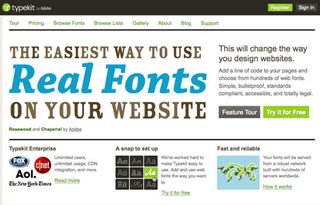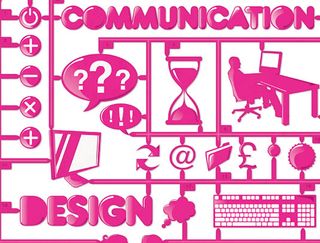How to present your branding on mobile devices
When purchases are just a click away, it's important to make your branding assets work well on mobile, argues Julie Strawson of Monotype Imaging and Brand Perfect.
Words: Julie Strawson
The proliferation of websites onto smartphones and tablets presents a huge opportunity for organisations to position their brands across differing web and mobile platforms. Your brand defines who you are, and just as important, helps you stand out from your competitors.
For instance, with fonts being both the essence and genesis of branding and identity, the typography your brand sends out has a direct effect on a consumer’s perception of your company, your products and whether you seem trustworthy or not.
A key difference in the digital medium is that the presentation and consistency of a brand is of even greater importance towards initiating a relationship with a customer, since first contact to purchase can be only a click away. Here are a few ways to make your brand shine on mobile devices.
01. Achieve consistency with web fonts

Consistency is vital when mastering digital environments. Building brand loyalty can take years and incur huge budgets to develop an identity that the consumer likes and respects. It would be hugely detrimental to lose this when transferring the brand to digital mediums.
New technologies are now emerging which help to improve consistency. Web fonts were originally launched in 2009 to enable web designers, content creators and brand holders to access and extend their brand in the digital medium for their web communications that include branded sites, blogs, web content, campaigns and advertising, as well as personal sites.
Mainstream technology
Some of the largest online retailers are now getting to grips with web fonts as the technology has gone mainstream. Grazia, Le coq sportif and Kelkoo have all had complete overhauls of their websites and web fonts played a key role in improving their digital experiences.
As internationally recognised brands that trade all over the world, the revamped websites had to cater for ecommerce and m-commerce usage and it was imperative that their brand behaviour remained constant across all their international platforms.
02. Talk to each other

Web fonts can help with consistency, but how else do brands achieve brand perfection? The arising issues of creating a brand experience across multiple platforms has led to a disconnect between designers, developers and creative directors.
They need to understand the challenges that the industry is currently facing and open the communication channels in order to achieve strong brand messages across all media platform and a better experience for consumers.
Digital continuity
To achieve digital continuity, everyone involved needs a greater understanding of the development process. Too often a breakdown exists between the vision of the idea and the reality of technical execution, resulting in a compromise of brand positioning, an unsatisfactory customer experience and a potential delay to market.
This needs to be addressed by both sides early in the design process in order to ensure the project runs smoothly.
Better briefs
Clearer briefs and guidelines are essential to the process so that developers aren’t left to struggle to meet inadequate briefs leading to delays or unfinished development.
With the acceleration in the adoption of new digital platforms, brands and creative directors need to communicate and collaborate with their development teams to gain a deeper understanding of this process.
03. Focus on key areas

The key areas that brands should consider when trying to achieve brand consistencies are:
- Fluidity: The concept of brand consistency may no longer be a case of the brand having to look familiar to ensure consistency. Brands need to be reliable and consistent in all aspects including design, tone, content and behaviour.
- Adaptability: New devices will always be released so brands need to be poised to adapt quickly when the latest big thing is launched. However, if they have instilled predictable performance that the consumer inherently appreciates, the transfer will be easier.
- Tone: The language and tone of the brand must be consistent regardless of context or digital medium in order to ensure brands don’t lose their identity. Failure to do so will leave a consumer alienated and detached.
Conclusion
If the uniformity from print to mobile isn’t there, then your brand is in serious trouble. We still see some companies jeopardising their reputations by not adapting their brands to be transferrable across digital media.
If your brand is not consistently extended across these platforms, then the ability to reach and connect with vast audiences through new digital media will be significantly reduced.
- Julie Strawson is marketing director for Monotype Imaging, home of the Monotype®, Linotype® and ITC® typeface libraries. In 2011 as part of her work at there she founded the Brand Perfect community for brands, creatives and developers, to improve multi-channel customer experiences. Read our story about Brand Perfect here.
Liked this? Then read these!
- The top logo and branding design trends for 2012
- How well do you know your brands?
- 20 pro tips for creating a mobile website
Have you been involved in making brands work on mobile devices? Share your experiences in the comments below!

Thank you for reading 5 articles this month* Join now for unlimited access
Enjoy your first month for just £1 / $1 / €1
*Read 5 free articles per month without a subscription

Join now for unlimited access
Try first month for just £1 / $1 / €1
Get the Creative Bloq Newsletter
Daily design news, reviews, how-tos and more, as picked by the editors.
The Creative Bloq team is made up of a group of design fans, and has changed and evolved since Creative Bloq began back in 2012. The current website team consists of eight full-time members of staff: Editor Georgia Coggan, Deputy Editor Rosie Hilder, Ecommerce Editor Beren Neale, Senior News Editor Daniel Piper, Editor, Digital Art and 3D Ian Dean, Tech Reviews Editor Erlingur Einarsson, Ecommerce Writer Beth Nicholls and Staff Writer Natalie Fear, as well as a roster of freelancers from around the world. The ImagineFX magazine team also pitch in, ensuring that content from leading digital art publication ImagineFX is represented on Creative Bloq.
